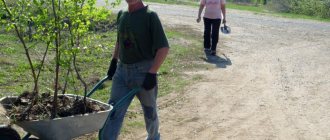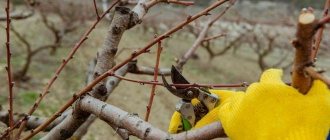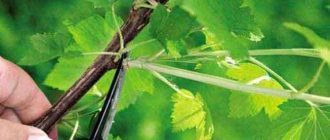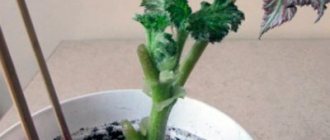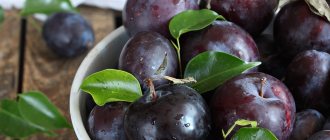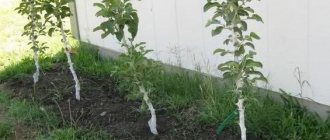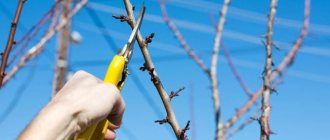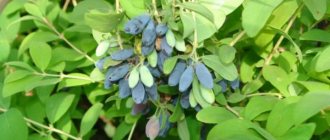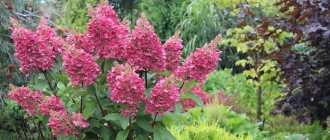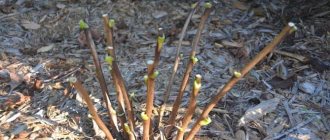Birch belongs to the deciduous trees of the Birch family. They grow throughout the Northern Hemisphere, even in cold Canada and northern Siberia. Belonging to a valuable species of tree, birch is famous not only for its healthy buds and sap, but also for the beauty of its trunk and crown.
A white and slender trunk with a beautiful crown adorns areas, alleys and parks throughout the Northern Hemisphere. Most birch trees grow freely without any pruning or crown formation.
Many summer residents and gardeners are not entirely happy with how and where birch grows:
- weak trunk and extensive crown - can break and damage buildings or wires;
- powerful root - it requires a lot of moisture;
- lush crown - shades other plantings.
If you have just decided to plant a birch tree on your plot, then it is not at all necessary to go to the nursery and buy a seedling. You can drive around the area and look for small trees with a twisted trunk. Care and pruning will turn an ordinary birch into a very beautiful garden bonsai.
Is it possible to trim the top of a birch tree? How to properly trim a birch tree on a site?
Let's immediately determine that this type of tree has a very negative attitude towards pruning in adulthood. For proper formation of the tree crown, the age of the birch tree should not exceed 15 years. As they say, you need to teach it from a young age. But if you already have a mature tree on your site, here’s what you can do:
- Form trim
- Sanitary pruning
- Removing the top of a tree (reducing windage)
The tree cannot tolerate deep pruning under any circumstances (it dies immediately). Trees with pruned tops last on average no more than 10 years. The whole problem is in the structure of the wood, which absorbs moisture and begins to rot and collapse; processes there proceed from the center to the bark. People who order such services most likely want to get rid of the tree at a lower cost.
Pruning of trees on the site is carried out mainly by climbers (arborists) in parts using the rope method. This allows you to work carefully with the trunk and minimize damage to the bark. Upon arrival, our specialists will give advice and tell you how to minimize interference when pruning and prolong life.
This is the removal of diseased, as well as dry twigs and branches (Photo 1).
The main goals of sanitary tree pruning:
- removal of dry parts of a tree for safety reasons - dry branches can collapse under the influence of the wind, causing damage to communications, cars, buildings, people;
removal of diseased branches for sanitary purposes - diseased branches are sources of various diseases; their timely elimination will help maintain the health of the tree and extend its life cycle.
Saw and pruning shears are prohibited
All our birches tolerate pruning easily. Unless it is carried out in the spring before the leaves completely bloom. During sap flow, the birch tree should not be touched: it will not cry, but sob. It is during this period that birch sap is collected from mature trees.
There is no need to form a crown in late autumn. There should be some time left for the wounds to dry.
I never prune in rainy weather. I cover large wounds with drying oil paint or pharmaceutical green. Small ones close on their own in dry weather.
Mature (especially old) birch trees do not tolerate trunk pruning well. Our huge birch tree, which grew from a seedling, is no exception. We made a mistake: we let the tree grow and only after that thought about the consequences. Now we have to attach a high folding ladder to the trunk and shorten all the thick branches that have grown on the top.
The mutilated crown of a mature tree is less visible in summer
It is better to limit the growth of birch from a very young age. Then an ugly “stump” will not appear on the top of your head. And the tree itself will be healthier. This does not apply to those birches that were decided not to be limited in growth.
Birch sawing. The “dark side” of birch: growth features
Uncultivated, i.e. wild birch trees grow very quickly and reach incredible sizes. Today's half-meter seedling will overtake the height of the house in five years, and in 20-25 years it can shoot up to 45 meters. Such a tapeworm is very harmonious on a large plot, where the house is large and there is enough territory. But the sight of a huge tree near a small country house makes the structure look tiny and absurd.
The birch grove is quite harmonious against the backdrop of modern design solutions - paved paths, a swimming pool and other small forms, if they are designed in the Russian style
In addition to dimensions, the following must be taken into account:
- Birch roots are located in the surface layers of the soil and spread outward within a radius of 6-10 meters (depending on the variety). At the same time, they suck nutrition from the ground so actively that even ordinary grass finds it difficult to get along with them. This means you will have to carefully consider the design under the tree and experiment with different plants until you find a “tolerant neighbor”.
- An adult tree absorbs more than 60 liters per day in summer. water, and only crumbs of liquid remain for other ornamental crops (under it).
- Birch produces a lot of debris; it often renews its foliage, and weeping varieties shed even thin branches. So it will become more difficult to maintain cleanliness in the area.
- If your site borders on neighbors, then an incorrectly planted birch tree can cause discord, as it casts a shadow far away, blocking the light of the plants in the lower tiers. And even with 4 meters from the fence allowed by SNiP, an adult tree creates a shady spot over a much larger area.
- Fruit trees do not coexist in close proximity to birch trees, so you cannot plant a garden within a radius of 10 meters.
How to control the growth of a forest tree?
If the arguments “for” outweigh all the “cons”, plant it boldly. Moreover, it is quite possible for an inexperienced gardener to restrain the growth of a forest beauty. As a rule, birch trees are brought to the site small, up to a meter high, because small seedlings take root more easily. Decide immediately what height will be most harmonious in your landscape.
As soon as the birch tree reaches the desired height after a year or two, cut off the top. This way you will give impetus to the growth of side branches, make the crown thicker and stop growth forever. Pruning is carried out in the summer and after leaf fall.
Recent postsPlanting grapes in the fall as an alternative to spring: what are the benefits? Technology for pruning cherries in the fall: diagrams and instructions for beginnersBeautiful maple tree in landscape design: 60 photos of successful application ideas
If a birch tree with several trunks has sprouted on your site, intertwine them and tie them together. In a couple of years this tree will take on its original shape.
In the wild there are common and weeping species. The latter do not grow above 20 meters. But if you want to find a seedling of a weeping variety in the forest, you will hardly recognize it by its appearance, since in “childhood” birch trees look almost the same. Focus on mature plants growing nearby. The wind rarely carries another variety over a long distance.
But if you come across an ordinary birch, you can turn it into a weeping one manually. Cut off the crown, and bend the side branches that tend upward and hang them on each weight (water bottles, pieces of iron, etc.). The main thing is not to overdo it with weight. You need to start with small weights, gradually increasing their weight. Then in winter the branches will not break and there will be no frost damage.
To give the branches a certain direction, pins are driven into the ground (as the tent is secured) and branches with weights are tied to them. In winter, the area where the rope and the branch come into contact should be wrapped with a rag to prevent the bark from rubbing.
Pruning an old birch tree. Birch pruning
Pruning birch is a procedure that is as necessary for the plant as loosening the soil. If you do this correctly, the tree will look neat, harmoniously complementing the landscape design of the site. Birch will not get sick and shade a large area, and in addition, it will consume less moisture than a tall adult plant.
Birch is a decoration of the Central Russian landscape. Its white trunk contrasts with the rich green foliage and looks like a marble column. This tree looks great in classic French style and in modern, Provence and even Japanese minimalist design. By pruning birch, it is possible to ensure that the tree has a compact appearance without creating shading problems or occupying a large area.
When should you prune a birch tree?
This tree has one feature for which Russians especially love it. In spring, birch sap flows through the vessels. Moreover, unlike other trees, except maple, the large volume of absorbed moisture means that even with a small cut in the bark, the sap begins to flow out. And for this reason, pruning a birch tree in the spring can lead to the death of the plant. If there is a need to carry out crowning at the beginning of the summer season, then it is advisable to do this in the last ten days of May or early June, when the abundant sap has already stopped.
The optimal time to prune birch trees is autumn. At this time, before persistent frosts, it is best to remove old, dry branches affected by various diseases. Autumn pruning is also recommended for the aesthetic design of the crown, in which the birch tree is given the necessary shape by shortening the branches that have grown greatly over the summer.
Sometimes, if a tree is blowing heavily in the wind and there is a risk that it may fall under the influence of wind and sticky wet snow, it is recommended to shorten the upper part. Trimming the top of a birch tree is carried out before the onset of severe frosts, at temperatures above -5°C. Otherwise, the cut may freeze, which will lead to the proliferation of harmful microorganisms and insects in the affected part. Pruning the top is also done in case of a high risk of damage by the birch to high-voltage transmission lines or the formation of a dense shadow that interferes with the growth of other plants on the site.
How to prune a birch tree
The top of the tree is cut off in the second year of life. Thanks to this, the growth of the tree slows down and the formation of lateral branches is activated. Removing the top, that is, topiary pruning of birch trees, is carried out in mid-October or in the summer, when the movement of sap slows down. Rejuvenating crowning is rarely used in relation to birch, since this plant has a very negative attitude towards the loss of most of the shoots.
To carry out pruning, you must follow a number of rules:
Sanitary pruning can be carried out two to three times a year, since healthy branches are not harmed. But aesthetic crowning is done once a year, and the older the tree, the fewer shoots are cut off. The cut areas must be treated with garden varnish, and it is advisable to let them dry for several days so that putrefactive microorganisms do not appear under the sealing layer on the wet wood. Garden var has a disinfectant property, but it only acts on the surface if the wound is fresh, but dried wood “draws” it into itself. The penetrating layer is small, but quite sufficient to disinfect the cut and protect it from disease.
Why aren't birch trees pruned every season?
This tree belongs to the group of moisture-loving trees. It can only grow under conditions of regular watering and sufficiently high soil density. The cut areas actively evaporate moisture. In addition, to supply the roots with nutrients, it is necessary that they be formed in the right quantities in the foliage. Since birch leaves are small in area and located on branches at a great distance, they produce exactly as many metabolites as are needed for the normal functioning of the plant.
By removing shoots, a person reduces the crown area; accordingly, the roots receive less nutrients, in particular carbohydrates. The root system begins to atrophy and the tree receives less moisture, which leads to its death.
The ordinary birch tree itself has a rather decorative crown shape due to its long hanging shoots. And if you do not interfere globally with the process of natural formation of the green part of the tree, but only maintain it in a healthy state, you can get a beautiful landscape element with minimal effort.
What time of year can you trim the branches of a birch tree? Choosing the shape of the trunk and crown
Birch trees can be shaped in a variety of ways. There are grafted trees with a weeping crown that can be purchased at garden centers. I prefer to create beauty with my own hands. With pruning shears and garden shears in hands. I do not use bending or tying branches.
The “umbrella” is overgrown, it’s time to trim the crown with sharp garden shears
First, you should take a closer look at the seedling. Determine its purpose. If you have no ideas, form the crown in the shape of an umbrella or a ball. Birch trees with crooked trunks are more suitable for garden bonsai. But you will have to work for a long time on the backbone - the basis of the bonsai.
The basis of a garden bonsai is its backbone
For one birch tree, I had to leave the trunk a little less than two meters high and not allow the crown to expand and grow upward. I need this tree to drain the far corner of the site where the drainage ditch ends. There are containers with humus, a barrel for watering and a greenhouse, which I would not like to shade.
Take a closer look at the huge birch trees growing in “clumps”. They don't interfere with each other if they have enough light. Low trees planted in a row can also coexist peacefully. Feel free to create hedges and screens from birch trees. Just don’t forget to cut them into the desired shape. I made a narrow birch screen up to two meters long.
I would like to draw your attention to the fact that pruning not only limits the size of the tree, but also inhibits its growth and strengthens the backbone.
There are wires stretched over this birch tree, which is why limiting the growth of the tree is so important.
We have two pine trees and two birch trees of the same age growing on our site. This is hard to believe if you compare the size of those trees that were allowed to grow freely and those that were regularly pruned.
Where can I get birch?
Any birch tree is perfectly formed. The seedling can be purchased at a garden center or nursery. It's easier to dig in a vacant lot. If you walk along swollen ditches and embankments, you will have a better chance of finding a tree with a bizarrely twisted trunk.
There are a lot of birches in the forest. Especially in the undergrowth, which is completely or partially removed during sanitary felling. But a trip to a forest near Moscow with a shovel in hand can end in serious trouble. Be sure to read the Forest Code before going into the forest to get planting material for your plot.
Remember the Forest Code when going into the forest for planting material
We rarely think about the diversity of birch trees in our area. I realized this when I was forming another tree, found on the site of an old estate near Moscow. There was nothing left there except an ancient birch tree with fairly large velvety leaves. There were many of its seedlings of different ages around. I dug up one of them and planted it on our site.
Nature creates all sorts of forms. The hidden beauty of Karelian birches and the luxury of their wood. Wind-bent trees that have to survive in the harsh North. On lakes Onega and Ladoga, trees grow, the roots of which manage to squeeze into the cracks of stone monoliths.
What forms does nature create!
Is it possible to saw a birch tree? Pruning birch trees: features and specifics
Today we can say with confidence that the trend has returned not only to have permanent housing within the city, but also to have a country plot and a house. Moreover, it is worth noting that modern suburban areas are quite rare, the main part of which is given over to vegetable gardens. In most cases, we are talking about a beautifully landscaped area, a significant portion of which is occupied by a lawn, flower beds and a garden.
Considering the peculiarities of our climate, quite often you can see growing trees in suburban areas, and many choose birch trees. They can be used to create a specific accent in landscape design, planted individually or in whole groups at once. The advantages of this choice are the following distinctive features. Firstly, birch trees have an attractive appearance; due to their light bark, they look quite advantageous, unlike all other tree species that do not have such an original color. Secondly, such trees are unpretentious.
Specifics of pruning birch trees
In particular, birch trees do not require massive pruning of branches, which is much less labor-intensive. Attention should be paid only to those branches that are classified as emergency. Such cases refer to branches that grow in such a way that they pose a direct threat. This means that they are capable of breaking off at any time, thereby representing a potential danger to people who are on the site and may receive serious injury, as well as to property and buildings that are located near the growth site.
This type of pruning is commonly called sanitary pruning. However, there are usually very few such branches on a birch tree. Moreover, an interesting fact is that those birches that grow in certain conditions are least likely to break: if the soil is not too moist and at the same time has a fairly low density. Such characteristics are found in those soils that are most often found in temperate and cold parts of Russia.
In addition to branches that may fall, others may also be pruned. However, such a need may be due to various reasons. In particular, such a case as the presence of external factors is often encountered, among which we can note the proximity to buildings and structures, as well as power lines and gas pipelines, which can be damaged.
One should not exclude such a reason for pruning birch trees as the need to achieve decorative purposes and create an attractive appearance. The last paragraph deals with a type of pruning called crowning a tree. This means cutting off the side branches first.
What to do with birch trees that are in disrepair?
If a potential hazard is clearly observed, the necessary measures must be taken to prevent it. There are two key routes that can be taken to achieve safety in the area adjacent to the tree, including pedestrian areas, recreation areas and other important facilities.
The first includes partial pruning of the tree crown. It may involve either sawing off the top of the tree, or a less radical method - trimming the tree around its circumference, thereby reducing its width.
The second way is to remove the tree completely. Moreover, cutting down entirely can also be organized according to two scenarios. Firstly, it can be organized as cutting down entirely or in parts. Secondly, you can use an additional aerial platform or not use it. Thirdly, the stumps left after cutting can either be removed (for this, uprooting or milling technology is used) or left in place. Let's take a closer look at pruning birch trees, which is caused by external factors.
Features of manipulations with birch
If we are talking about such a type of crowning as topiary pruning (which implies trimming the top of the tree), then the decision in this case should be made on the basis that, according to experts, summer is considered the optimal time for organizing this event. At all other times of the year, such work will cause too active sap flow, the unfavorable result of which can be dehydration and excessive drying of the tree.
As for tree removal, this decision is sometimes the most adequate and objective. Moreover, it is better to carry out stump removal along with tree removal.
Winter beauty
In winter, birch trees always attract attention, especially formed
In winter we see only the “skeleton” of birch trees. It is at this time of year that the bizarre curves of garden bonsai attract attention. True, all the flaws are more noticeable than under the leaves in summer.
Many people remember the freezing rains that caused a lot of trouble. They did not spare the birch either. Garden bonsai under the ice crust were not only not damaged, but also looked more impressive.
The freezing rain did not damage the strong birch trees with a formed crown. He did not spare large trees in forests and parks
- Author: Maria Sukhorukikh
Rate this article:
- 5
- 4
- 3
- 2
- 1
(0 votes, average: 0 out of 5)
Share with your friends!
Topiary pruning of birch.
Topiary pruning of birch
Topiary pruning of birch
Deciduous, often thorny, frost-resistant trees and shrubs with decorative leaves, flowers and rough bark.
Almost all robins form powerful shoots, even too powerful in rich soils; such shoots often freeze.
In open places, many species freeze slightly at a young age; plant them in open ground in the spring and do not feed them to limit the growth of shoots.
Robinia pseudoacacia
Grown for its fragrant flowers that develop in summer and its thin leaves.
In continental climates it usually becomes a powerful tree, but in cold maritime climates the shoots become brittle, so it is important to properly form the plant.
Plant it in a permanent place as early as possible. Most cultivated forms, including the columnar 'Pyramidalis', require the same care as the wild one.
The cultivar 'Inermis' ("Thornless") is characterized by a natural dense crown that does not require thinning.
Timing of pruning
From mid to late summer.
Shaping and trimming
Form as a standard tree with a main trunk, the height of the standard is about 2-2.5 m.
It is important to preserve the main shoot before fruiting begins; to do this, remove competing shoots.
Make sure the side branches are spaced evenly and freely, and remove any vertical shoots near the trunk.
Branches that extend from the trunk at a shallow angle may break off.
It is better to keep pruning of mature trees to a minimum. Remove all suckers as soon as they appear. Large cuts rarely heal well and usually rot.
In addition, as a result of removing large branches, the tree develops powerful vertical ones, which can be dangerous if allowed to develop.
To rejuvenate a tree, simply cut it down and, if it is not grafted, form one of the shoots as a new trunk.
Let's summarize
White-trunked beauties grow everywhere and delight us both in summer and winter. Trees with an unpruned crown look dignified and natural in their environment - in the forest. But trees growing in gardens and orchards often need to straighten their crowns. So, when to prune birch trees:
- sanitary - done to remove diseased, broken and interfering branches. This pruning is best done in early spring;
- rejuvenating - needed to refresh the appearance of the tree and stimulate the growth of new shoots. It is better to carry out in spring or autumn;
- growth limitation - it is better to do pruning in the summer season;
- Decorative haircut - to give an original shape - is carried out in spring or autumn. Under no circumstances in the spring, otherwise the tree will die.
Is it worth talking about how good birch is? The general opinion will be clear. But it also happens that land owners are not at all happy with the white-trunked trees that have grown near the house, in the garden or vegetable garden. They can be understood. This is the fragility of the trunk in hurricane winds. Mature trees shade the area. Often there are wires in the crown of a fast-growing tree. Birch works as a powerful pump that dries out the soil. In some cases, this is pleasing, in others, there is a need to moisten the soil. Many troubles can be avoided if you pick up a pruner and begin to form a seedling, and as a reward you will receive strong, low trees and garden bonsai. Then the birch trees, the height of which will be under control at all times, will help drain damp places, and the garden bonsai will decorate the area.
